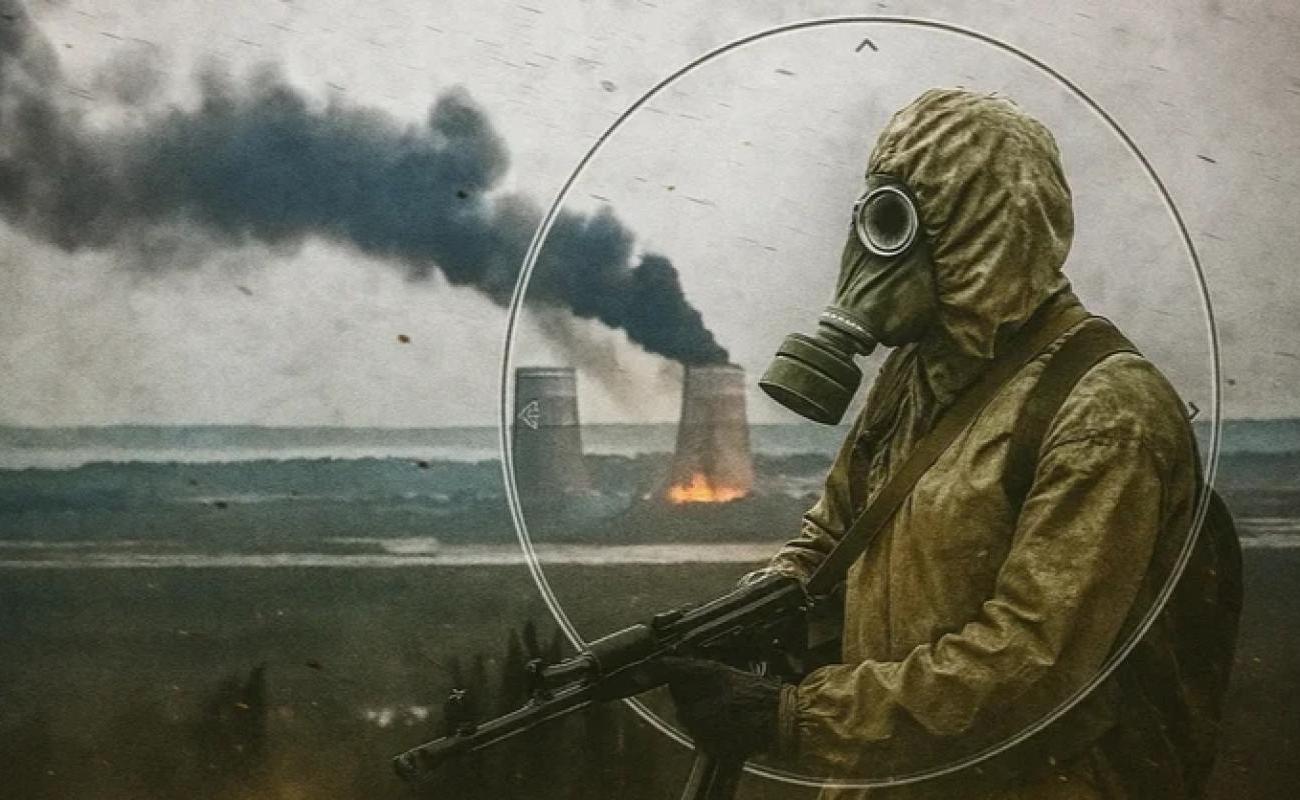The Shadows of Chernobyl Over Zaporizhzhia: What Will Happen If ZNPP’s Diesel Generators Stop Working

The Zaporizhzhia Nuclear Power Plant has been operating for days without external power supply – relying solely on diesel generators. One of them has already broken down, and the fuel reserves are running low. President Zelensky warns: Russia’s actions are endangering the whole of Europe. Focus has learned what this mode of operation means for the safety of the plant, how great the actual risk of nuclear fuel leakage is, and why the world still lacks an effective mechanism to stop the Kremlin’s nuclear blackmail.
The Zaporizhzhia Nuclear Power Plant has been in emergency mode for days due to disconnection from the power grid as a result of Russian shelling. The only source of energy remains the diesel generators, which are not designed for long-term continuous operation. This situation poses a serious threat to the safety of the facility, as the equipment may fail, increasing the risk of an accident.
In his address, Ukrainian President Volodymyr Zelensky emphasized that Russian troops are systematically preventing the restoration of electricity supply.
“We already have information that one of the generators has failed. And it is precisely the Russians who, through shelling, are preventing the repair of power lines to the station and the restoration of basic safety. This is a threat to everyone, absolutely,” Zelensky stressed.
Zelensky held a meeting with representatives of the Armed Forces and the Ministry of Energy and instructed the Government, in cooperation with the Ministry of Foreign Affairs, to draw the attention of the international community more actively to the crisis. He also noted that a meeting on sanctions was held with the Secretary of the National Security and Defense Council and the Sanctions Commissioner in order to increase pressure on Russia.
ZNPP Without Power: What Is Happening at the Plant
According to the State Nuclear Regulatory Inspectorate of Ukraine, the generators ensure the operation of safety systems, particularly the cooling of nuclear fuel in the reactors and spent fuel pools. However, the Russian military is preventing the repair of power transmission lines, which poses a risk of an emergency with consequences that could lead to radiation release in Ukraine and neighboring countries.
Oleh Korikov, Head of the State Nuclear Regulatory Inspectorate of Ukraine, emphasized that Russia’s actions violate the principles of nuclear safety defined by the IAEA. Shelling and disregard for international norms, especially the IAEA and UN resolutions on the de-occupation of the plant, increase the risk of catastrophe. A reliable power supply is a key element of safety, but Russia is blocking the restoration of stable electricity supply, creating a regional threat.
“The failure to comply with the requirements and principles of nuclear and radiation safety by the Russian military, the shelling of power transmission lines by Russian troops and their damage, and the creation of obstacles for the restoration of those lines by Ukrainian specialists – all these actions could lead to the worst-case scenario,” said Korikov.
Olena Pareniuk, Senior Research Fellow at the Institute for Safety Problems of Nuclear Power Plants of the National Academy of Sciences of Ukraine, told Focus that the plant has been in a cold shutdown mode for three years. The reactors are not producing energy, and the pressure and temperature inside them are normal – around 40 to 50 degrees Celsius. Under the current cold weather conditions and with no active power generation, the risk of explosion or radiation leakage is minimal. From the standpoint of nuclear physics, this is a stable and safe state.
The Threat to the Zaporizhzhia Nuclear Power Plant: How Likely Is a Nuclear Fuel or Waste Leak?
However, the Zaporizhzhia Nuclear Power Plant is currently functioning as a storage site for spent nuclear fuel, as the fuel in the reactors has not been replaced for three years. All facilities containing radioactive waste or fuel must be cooled in accordance with international safety standards. Cooling is ensured by the flow of water pumped by pumps powered by diesel generators.
“The problem is that one generator has already failed, and the others have been operating without maintenance for three years. According to regulatory documents, the fuel in the generators is sufficient for 10 days of continuous operation, and they are guaranteed to function during that period. But it has already been eight days without power restoration or fuel deliveries. After 10 days, there are no guarantees: the generators could break down, and without fuel, they could completely stop,” said Pareniuk.
According to experts, this situation leads to a deadlock from the standpoint of international jurisprudence. An accident may occur at the nuclear facility, but at the moment, no measures are being taken to prevent it. There is no historical precedent for a nuclear power plant being dependent on diesel generators for such a long time. Without cooling, the fuel will heat up, which could lead to a nuclear fuel leak. However, without external damage to the facility, the likelihood of such a scenario is extremely low.
“If nothing damages the facility – for example, shelling – no significant contamination is expected. That is why there is no mass panic: if the plant were operating at full capacity, the consequences would be catastrophic, with the release of radionuclides,” the expert noted.
It should be recalled that Ukraine’s Ministry of Energy reported on September 23 that the occupied Zaporizhzhia Nuclear Power Plant experienced its tenth power outage and was forced to switch to diesel generators.
The head of the International Atomic Energy Agency (IAEA), Rafael Grossi, reported on September 8 that Russia has violated six out of seven pillars of nuclear safety at the Zaporizhzhia Nuclear Power Plant.
